Mitigating Broadcasting Storm Using Multihead Nomination Clustering in Vehicular Content Centric Networks
Abstract
:1. Introduction
- It extends the hello packet header to extract the information from neighboring vehicles. This information is used to select the most appropriate head vehicles in the clustered network.
- If there is more than one head vehicle in the network, then its information is shared with the RSU. The RSU receives that information and maintains it in the cluster information table .
- Depending on information, the RSU selects the most appropriate to satisfy the maximum number of interests in the network.
- If the interesting content is not available in the network, then interest is forwarded from to RSU. If there is a disruptive communication link, the RSU utilizes the entries to select the new to eliminate the broadcasting storm in the network.
2. Related Work
2.1. Clustering Schemes in CCN
2.2. Routing Schemes in CCN
3. System Model Overview
Working of Proposed Scheme
| Algorithm 1: Head Vehicle Selection Algorithm |
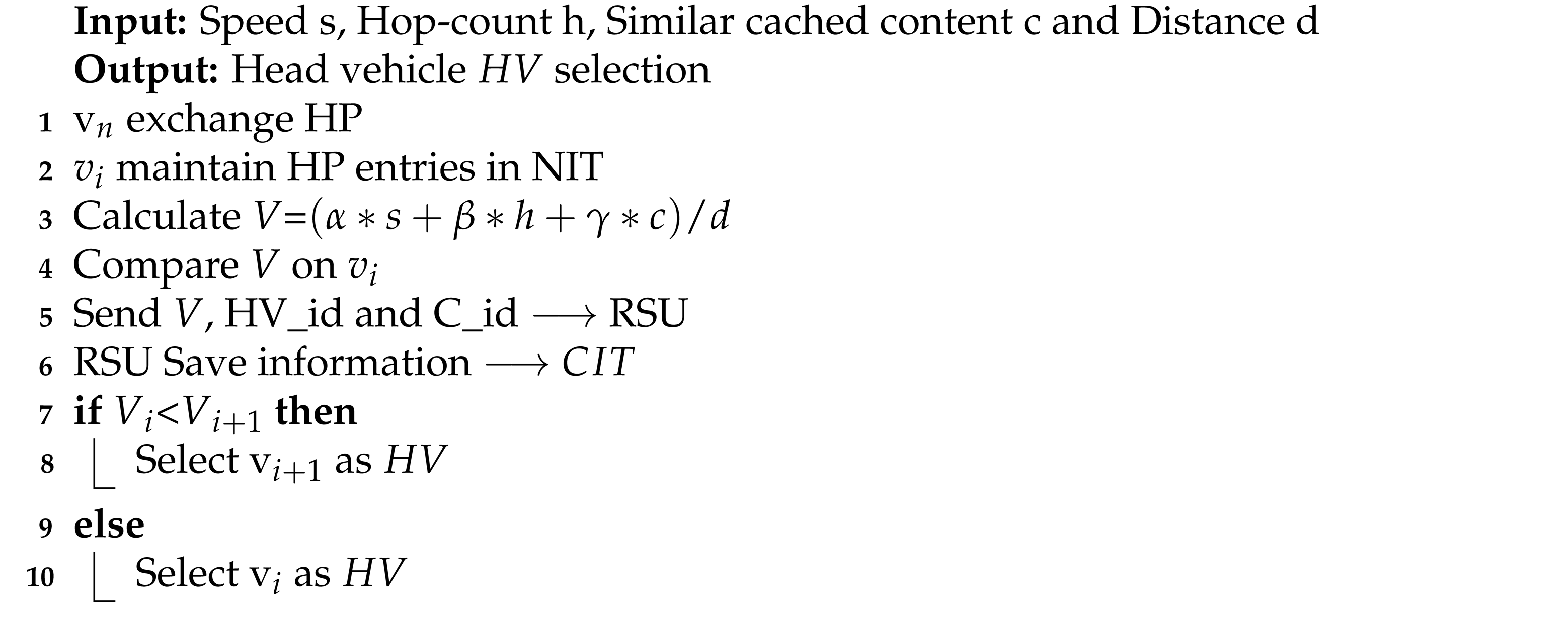 |
| Algorithm 2: Mobility Management Algorithm |
 |
- Step 1:
- Each vehicle in the cluster broadcasts a hello packet in the network. The extended hello packet header is defined in Figure 2. The hello packet maintains the Vehicle ID and its Speed, and Location information along with cached Content IDs. The size of the extended hello packet fields is 22 bytes. This information is used to select the most appropriate head vehicle (HV) in the cluster.
- Step 2:
- Each neighbor vehicle receives the hello packet and maintains the received information in the neighbor information table (NIT). It also shares its information in response. When the vehicle needs some content from the network, it broadcasts an interest packet in the network. There are several clusters are available on the road. Each cluster has a unique cluster_id .
- Step 3:
- Each cluster shares its , head vehicle ID , and value V with the nearest RSU. The information is maintained in . The table header of is shown in Figure 3. If there are several nominated head vehicles in the cluster, then the RSU uses that information in to select the most appropriate in the network. The RSU also informs the other vehicles in the cluster.
- Step 4:
- If the requested content is not available in the relay vehicle content store, then it forwards it to the . Now, the head vehicle satisfies the interest of the vehicle using a data packet. If the content is not available in the network, then forwards the interest packet to the nearest RSU.
- Step 5:
- Now, RSU sends the requested content to the . Then, head vehicle forwards the data packet to the requesting vehicle.
4. Simulation Setup
- 1.
- Packet Delivery RatioPDR is a successful packet delivery between various vehicles. The core goal of the proposed scheme is to ensure successful communication. Equation (4) shows the percentage calculation of PDR. The total received message () is divided by total sent messages () in the cluster, by various consumer vehicles, and multiplied by 100 for the percentage.
- 2.
- Communication DelayThis is the average time (t) taken by the packet that was generated from the source and reached the destination. The communication delay is calculated in seconds. The following Equation (5) shows the summation of the average time taken by packets in communication.
- 3.
- Interest Drop FractionThe proposed scheme eliminates the broadcasting of disruptive communication links. Therefore, the interest packet drop fraction is minimum on an increasing number of vehicles. Moreover, if the interested content is not available in the network, then forwards the interest packet to RSU. The equation to calculate is given below.
- 4.
- Cache Success Ratio (CSR)The CSR is the number of requests satisfied by the head vehicle. The cache miss ratio (CM) is the number of dropped requests or unsatisfied requests. CH is the number of requests satisfied by the vehicles. Equation (7) to calculate CSR is given below.
Experimental Results Analysis
- 1.
- Packet Delivery Ratio (PDR %)According to Figure 7, the results show that with the increasing size of vehicles, the PDR of the proposed scheme increases compared to COMP. This enables satisfying the interest of vehicles through the head vehicle. If the content is not available in the cluster, then it forwards to the RSU. The RSU sends the data packet in response. Only can send interest packets and receive the data packets from RSU. In the case of disruptive communication links, it eliminates the broadcasting, and RSU uses entries to select the new . This minimizes the packet collision probability. Moreover, if the content is not available in the network, then it is satisfied by the RSU. Therefore the interest satisfaction rate also increases with the increasing number of vehicles. However, in the case of COMP, the Markov model is used to predict the mobility of the vehicle. However, if the vehicle moves out of the communication range, then the communication process starts again. Therefore, the PDR of COMP decreases with an increasing number of vehicles. IBFS and MCRP2 do not handle disruptive communication links.
- 2.
- Communication Delay (s)As shown in Figure 8, the communication delay in the proposed scheme decreases with the increasing number of vehicles because the interest is satisfied from the . Initially, the delay is high because the requested content is not available in the network. However, once the content is available in the CS of vehicles, then with an increasing number of vehicles, the communication delay decreases. Moreover, if the content is not available in the network, then the RSU satisfies the interest packet. On disruptive communication links, the nominates the new , so it eliminates the nomination process in V2V communication. It provides efficient communication within the minimum delay. In the case of COMP, with disruptive communication links in the cluster, the head vehicle selection process starts again in V2V communication. IBFS has the highest communication delay because it uses selective interest packet forwarding, which increases the communication delay. The communication delay of COMP decreases upon increasing number of vehicles, because the PDR is also low compared to the proposed scheme. In the case of disruptive communication links, the link establishment process starts again.
- 3.
- Interest Drop Fraction (IDF %)As shown in Figure 9, the IDF of the proposed scheme decreases with an increasing number of vehicles because it uses entries to handle the disruptive communication links. In the case of COMP, the IDF is high because with disruptive communication links, the link establishment process starts again. IBFS starts broadcasting on disruptive communication links so its IDF is high with an increasing number of vehicles. So, using entries and V2I communication in the proposed scheme ensures less IDF compared to IBFS, COMP, and MCRP2.
- 4.
- Cache Success Ratio (CSR)CSR is the number of successful packets satisfied in the cluster. As shown in Figure 10, the CSR of the proposed scheme is higher than COMP because it grouped the vehicles with the same interest. The maximum interests are satisfied by the . If the content is not available, then forwards the interest to RSU. In the context of disruptive communication links, the RSU has a list of other nominated . Therefore, instead of re-selection of , the new is nominated by RSU to satisfy the interest packets. In the case of COMP, to satisfy the interest packet on disruptive communication links, the cluster selection starts again. It decreases the CSR in COMP. IBFS and MCRP2 also show increments in CSR but lower than the proposed scheme.
5. Conclusions and Future Work
Author Contributions
Funding
Institutional Review Board Statement
Informed Consent Statement
Acknowledgments
Conflicts of Interest
References
- Chen, C.; Wang, C.; Qiu, T.; Atiquzzaman, M.; Wu, D.O. Caching in vehicular named data networking: Architecture, schemes and future directions. IEEE Commun. Surv. Tutor. 2020, 22, 2378–2407. [Google Scholar] [CrossRef]
- Li, L.; Wang, W.; Gao, Z. Driver’s Social Relationship Based Clustering and Transmission in Vehicle Ad Hoc Networks (VANETs). Electronics 2020, 9, 298. [Google Scholar] [CrossRef] [Green Version]
- Chiluveru, R.; Gupta, N.; Teles, A.S. Distribution of Safety Messages Using Mobility-Aware Multi-Hop Clustering in Vehicular Ad Hoc Network. Future Internet 2021, 13, 169. [Google Scholar] [CrossRef]
- Maryam, H.; Wahid, A.; Shah, M.A. Mitigating broadcast storm in interest/data packet forwarding in vehicular content centric networking. In Proceedings of the 2017 International Conference on Communication Technologies (ComTech), Rawalpindi, Pakistan, 19–21 April 2017; pp. 162–167. [Google Scholar]
- Maryam, H.; Shah, M.A.; Arshad, S.; Siddiqa, A.; Wahid, A. TFS: A reliable routing protocol for Vehicular Content Centric Networks. In Proceedings of the 2017 13th International Conference on Emerging Technologies (ICET), Islamabad, Pakistan, 27–28 December 2017; pp. 1–6. [Google Scholar]
- Siddiqa, A.; Shah, M.A.; Khattak, H.A.; Akhunzada, A.; Ali, I.; Razak, Z.B.; Gani, A. Social internet of vehicles: Complexity, adaptivity, issues and beyond. IEEE Access 2018, 6, 62089–62106. [Google Scholar] [CrossRef]
- Siddiqua, A.; Shah, M.A.; Khattak, H.A.; Din, I.U.; Guizani, M. ICAFE: Intelligent congestion avoidance and fast emergency services. Future Gener. Comput. Syst. 2019, 99, 365–375. [Google Scholar] [CrossRef]
- Korichi, A.; Kerrache, C.A.; Fekair, M.E. RCVC: RSU-Aided Cluster-Based Vehicular Clouds Architecture for Urban Areas. Electronics 2021, 10, 193. [Google Scholar]
- Wahid, A.; Yasmeen, H.; Shah, M.A.; Alam, M.; Shah, S.C. Holistic approach for coupling privacy with safety in VANETs. Comput. Netw. 2019, 148, 214–230. [Google Scholar] [CrossRef]
- Wahid, A.; Shah, M.A.; Qureshi, F.F.; Maryam, H.; Iqbal, R.; Chang, V. Big data analytics for mitigating broadcast storm in vehicular content centric networks. Future Gener. Comput. Syst. 2018, 86, 1301–1320. [Google Scholar] [CrossRef] [Green Version]
- Khan, U.A.; Lee, S.S. Multi-layer problems and solutions in VANETs: A review. Electronics 2019, 8, 204. [Google Scholar] [CrossRef] [Green Version]
- Ahsan, W.; Khan, M.F.; Aadil, F.; Maqsood, M.; Ashraf, S.; Nam, Y.; Rho, S. Optimized node clustering in VANETs by using meta-heuristic algorithms. Electronics 2020, 9, 394. [Google Scholar] [CrossRef] [Green Version]
- Gulati, A.; Aujla, G.S.; Chaudhary, R.; Kumar, N.; Obaidat, M.; Benslimane, A. Dilse: Lattice-based secure and dependable data dissemination scheme for social internet of vehicles. IEEE Trans. Dependable Secur. Comput. 2019. [Google Scholar] [CrossRef]
- Yao, L.; Wang, Y.; Wang, X.; Wu, G. Cooperative caching in vehicular content centric network based on social attributes and mobility. IEEE Trans. Mob. Comput. 2019, 20, 391–402. [Google Scholar] [CrossRef]
- Huang, W.; Song, T.; Yang, Y.; Zhang, Y. Cluster-based cooperative caching with mobility prediction in vehicular named data networking. IEEE Access 2019, 7, 23442–23458. [Google Scholar] [CrossRef]
- Gohar, M.; Khan, N.; Ahmad, A.; Najam-Ul-Islam, M.; Sarwar, S.; Koh, S.J. Cluster-based device mobility management in named data networking for vehicular networks. Mob. Inf. Syst. 2018, 2018, 1710591. [Google Scholar] [CrossRef]
- Satyajeet, D.; Deshmukh, A.; Dorle, S. Heterogeneous approaches for cluster based routing protocol in vehicular ad hoc network (vanet). Int. J. Comput. Appl. 2016, 134, 1–8. [Google Scholar] [CrossRef]
- Mamatha, T.; Aishwarya, P. An efficient cluster based routing protocol using hybrid FCM-Q LEACH for vehicular ad hoc networks. Int. J. Appl. Eng. Res. 2019, 14, 1604–1612. [Google Scholar]
- Sampath, V.; Karthik, S.; Sabitha, R. Position-Based Adaptive Clustering Model (PACM) for Efficient Data Caching in Vehicular Named Data Networks (VNDN). Wirel. Pers. Commun. 2020, 117, 2955–2971. [Google Scholar] [CrossRef]
- Amadeo, M.; Campolo, C.; Ruggeri, G.; Lia, G.; Molinaro, A. Caching Transient Contents in Vehicular Named Data Networking: A Performance Analysis. Sensors 2020, 20, 1985. [Google Scholar] [CrossRef] [Green Version]
- Kumar, S.; Tiwari, R. Optimized content centric networking for future internet: Dynamic popularity window based caching scheme. Comput. Netw. 2020, 179, 107434. [Google Scholar] [CrossRef]
- Park, S.; Oh, S.; Nam, Y.; Bang, J.; Lee, E. Mobility-aware distributed proactive caching in content-centric vehicular networks. In Proceedings of the 2019 12th IFIP Wireless and Mobile Networking Conference (WMNC), Paris, France, 11–13 September 2019; pp. 175–180. [Google Scholar]
- Suder, J.; Podbucki, K.; Marciniak, T.; Dąbrowski, A. Low Complexity Lane Detection Methods for Light Photometry System. Electronics 2021, 10, 1665. [Google Scholar] [CrossRef]
- Chen, M.; Wang, T.; Ota, K.; Dong, M.; Zhao, M.; Liu, A. Intelligent resource allocation management for vehicles network: An A3C learning approach. Comput. Commun. 2020, 151, 485–494. [Google Scholar] [CrossRef]
- Nakazawa, T.; Tang, S.; Obana, S. CCN-based inter-vehicle communication for efficient collection of road and traffic information. Electronics 2020, 9, 112. [Google Scholar] [CrossRef] [Green Version]
- Qazi, F.; Khalid, O.; Rais, R.N.B.; Khan, I.A. Optimal content caching in content-centric networks. Wirel. Commun. Mob. Comput. 2019, 2019, 6373960. [Google Scholar] [CrossRef] [Green Version]
- Tizvar, R.; Abbaspour, M. A density-aware probabilistic interest forwarding method for content-centric vehicular networks. Veh. Commun. 2020, 23, 100216. [Google Scholar] [CrossRef]
- Yaqub, M.A.; Ahmed, S.H.; Kim, D. A Detailed Simulation Study of the Push-Based Protocol for Critical Data Dissemination in Vehicular Named Data Networks. In Proceedings of the 2019 International Conference on Networking and Network Applications (NaNA), Daegu, Korea, 10–13 October 2019; pp. 191–195. [Google Scholar]
- Ostrovskaya, S.; Surnin, O.; Hussain, R.; Bouk, S.H.; Lee, J.; Mehran, N.; Ahmed, S.H.; Benslimane, A. Towards multi-metric cache replacement policies in vehicular named data networks. In Proceedings of the 2018 IEEE 29th Annual International Symposium on Personal, Indoor and Mobile Radio Communications (PIMRC), Bologna, Italy, 9–12 September 2018; pp. 1–7. [Google Scholar]
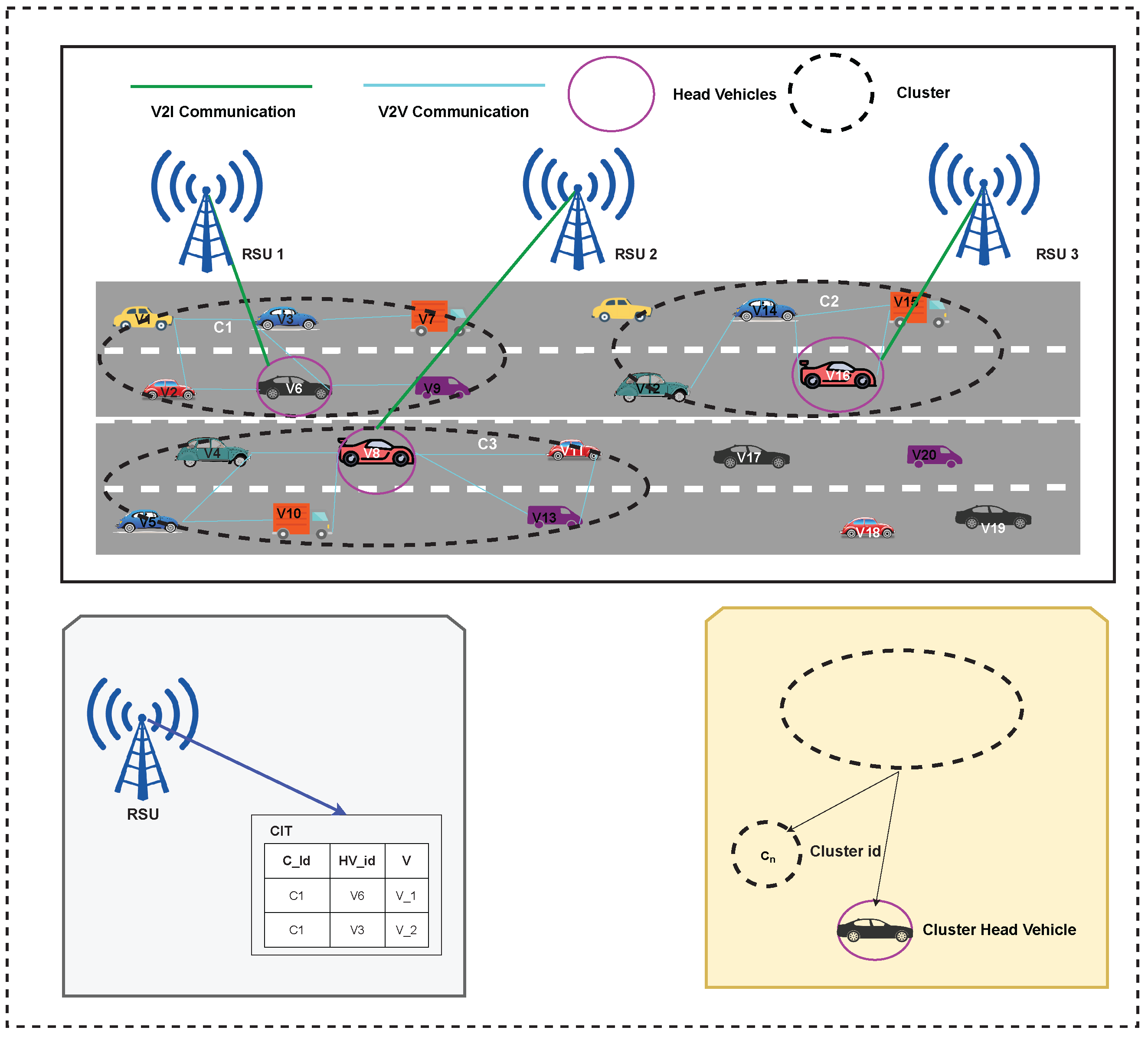
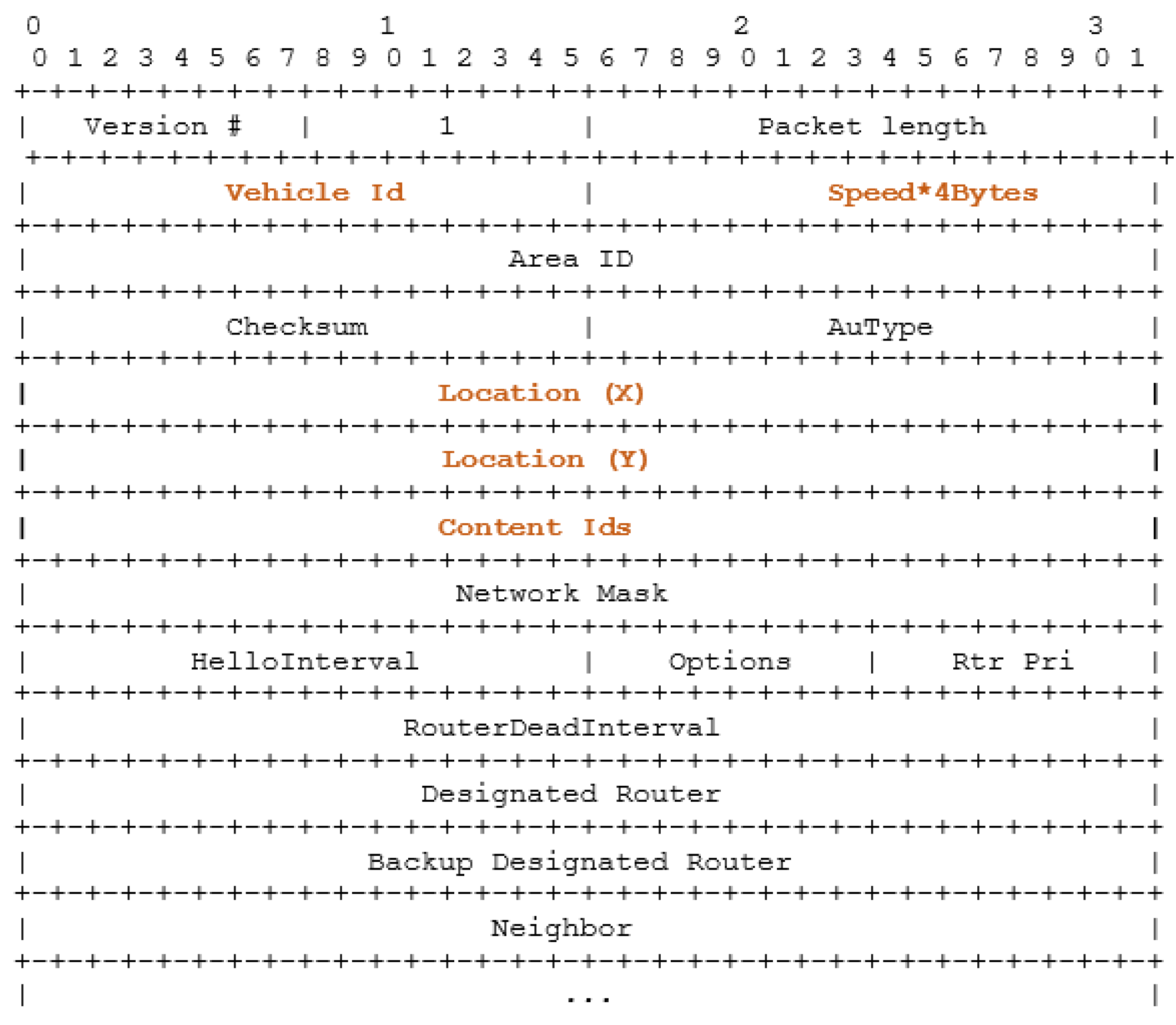
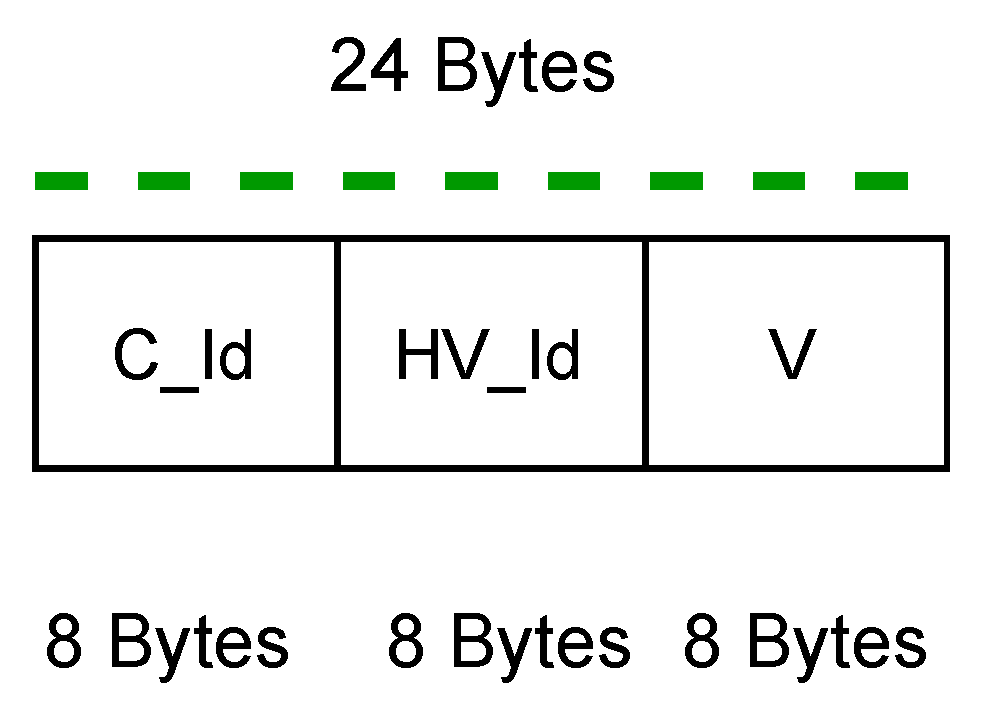
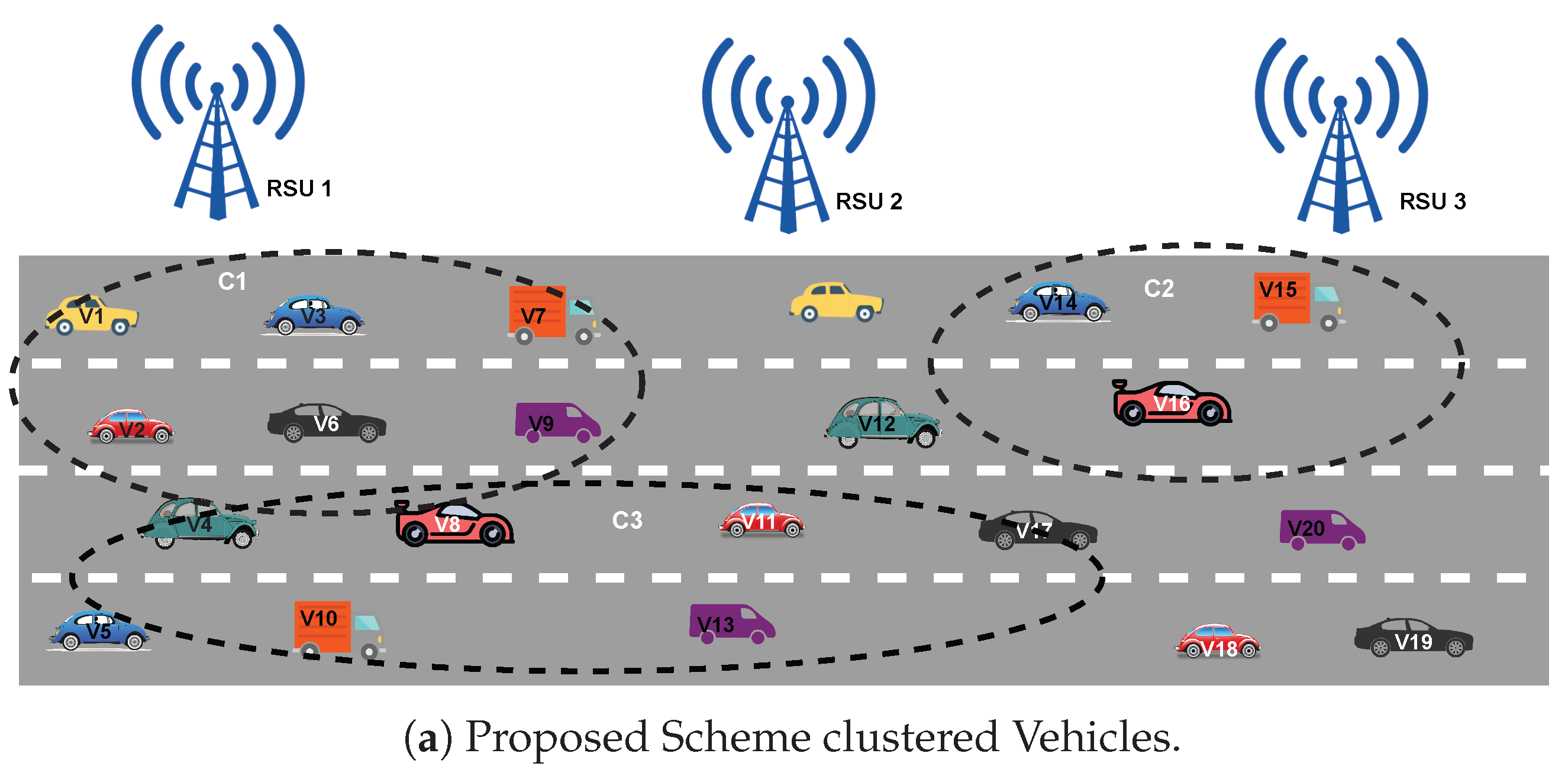
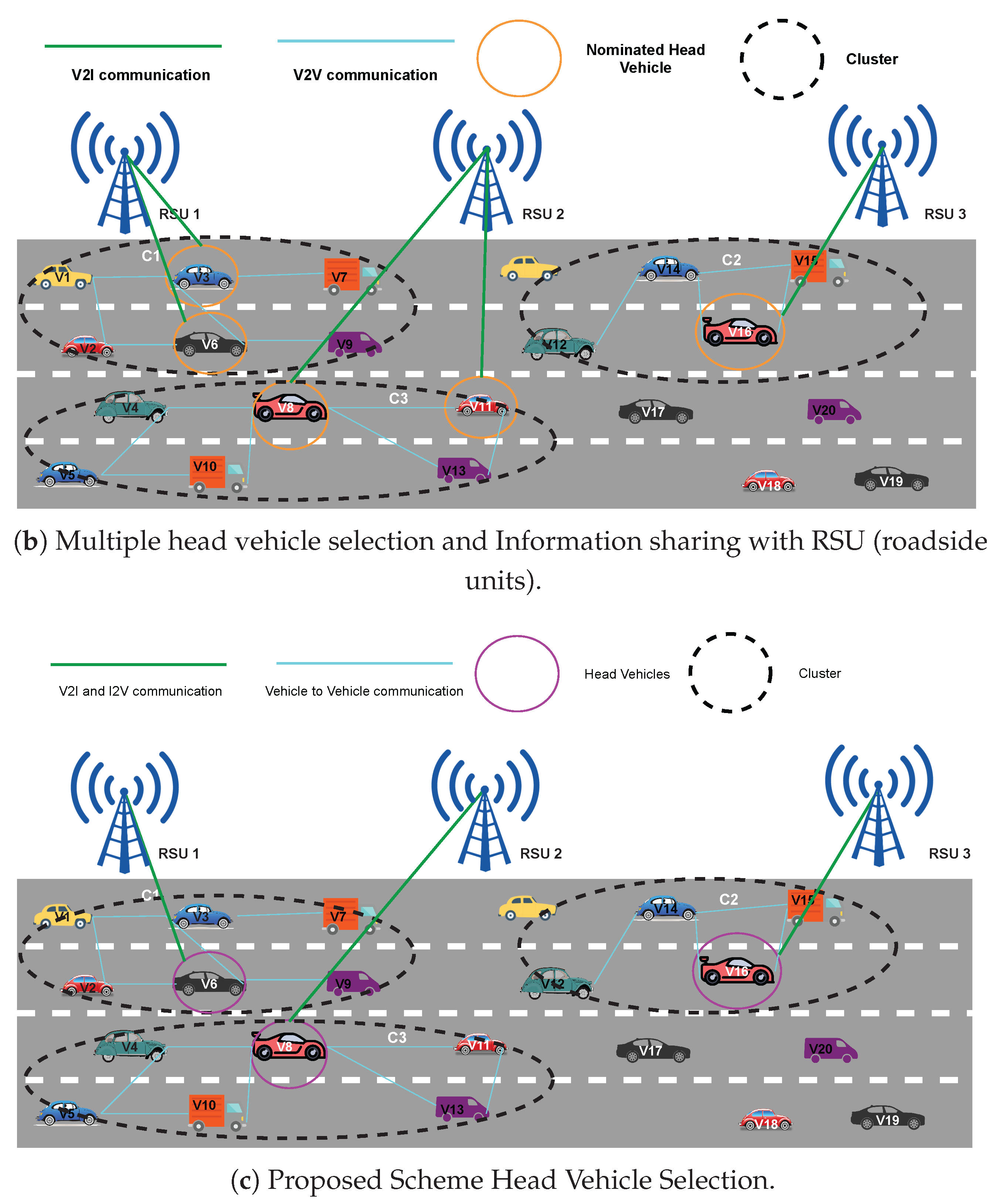
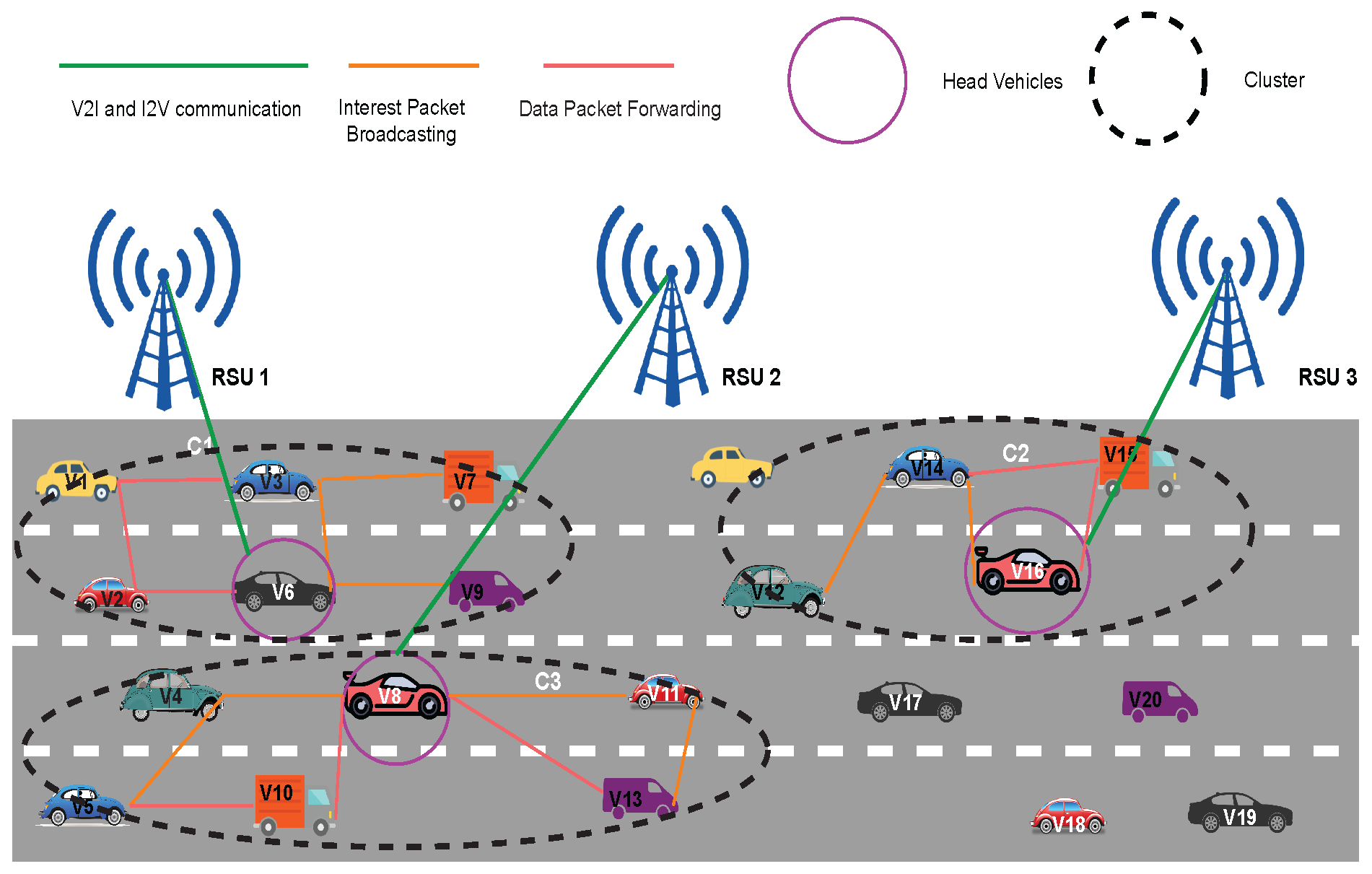
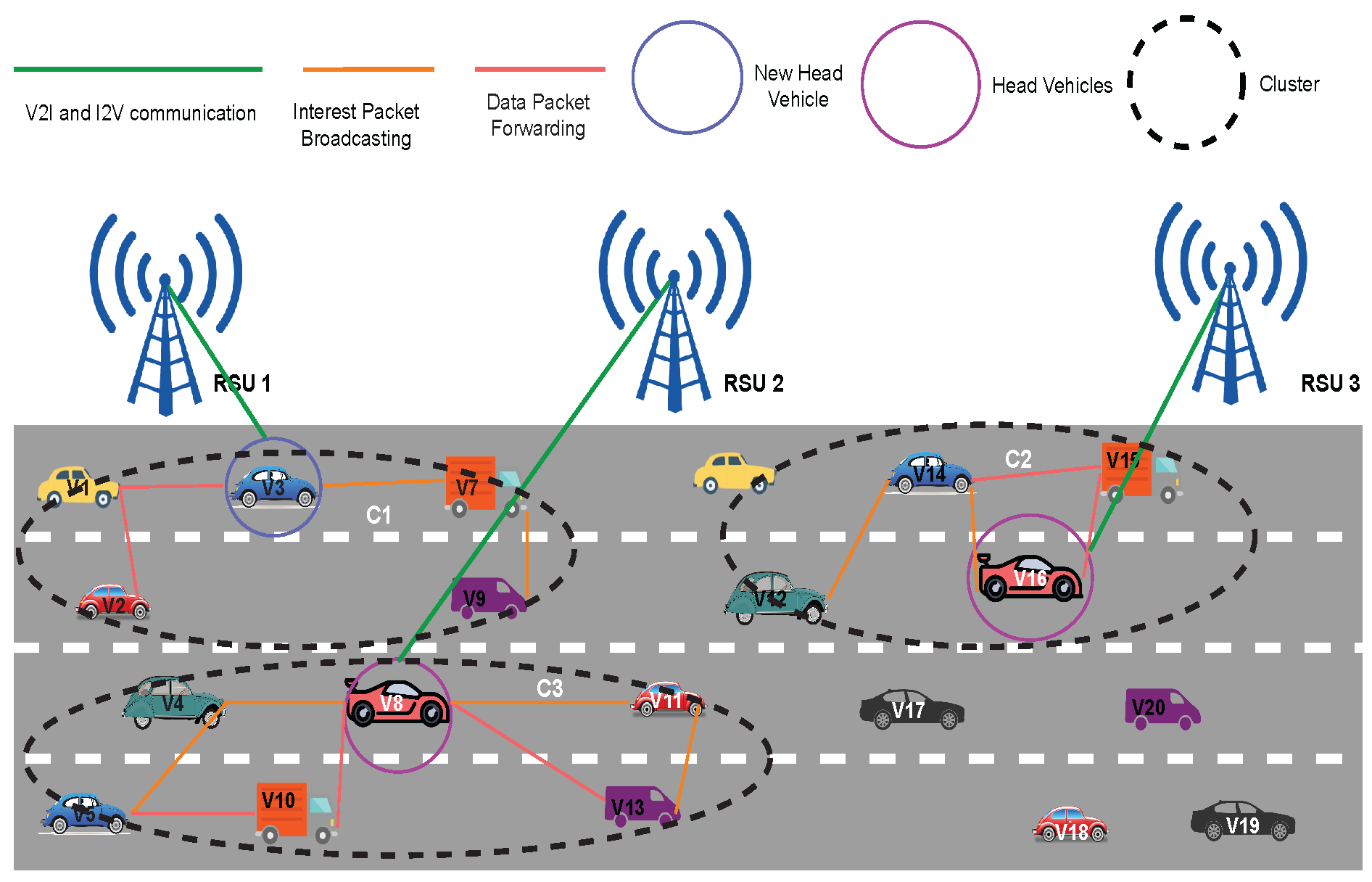
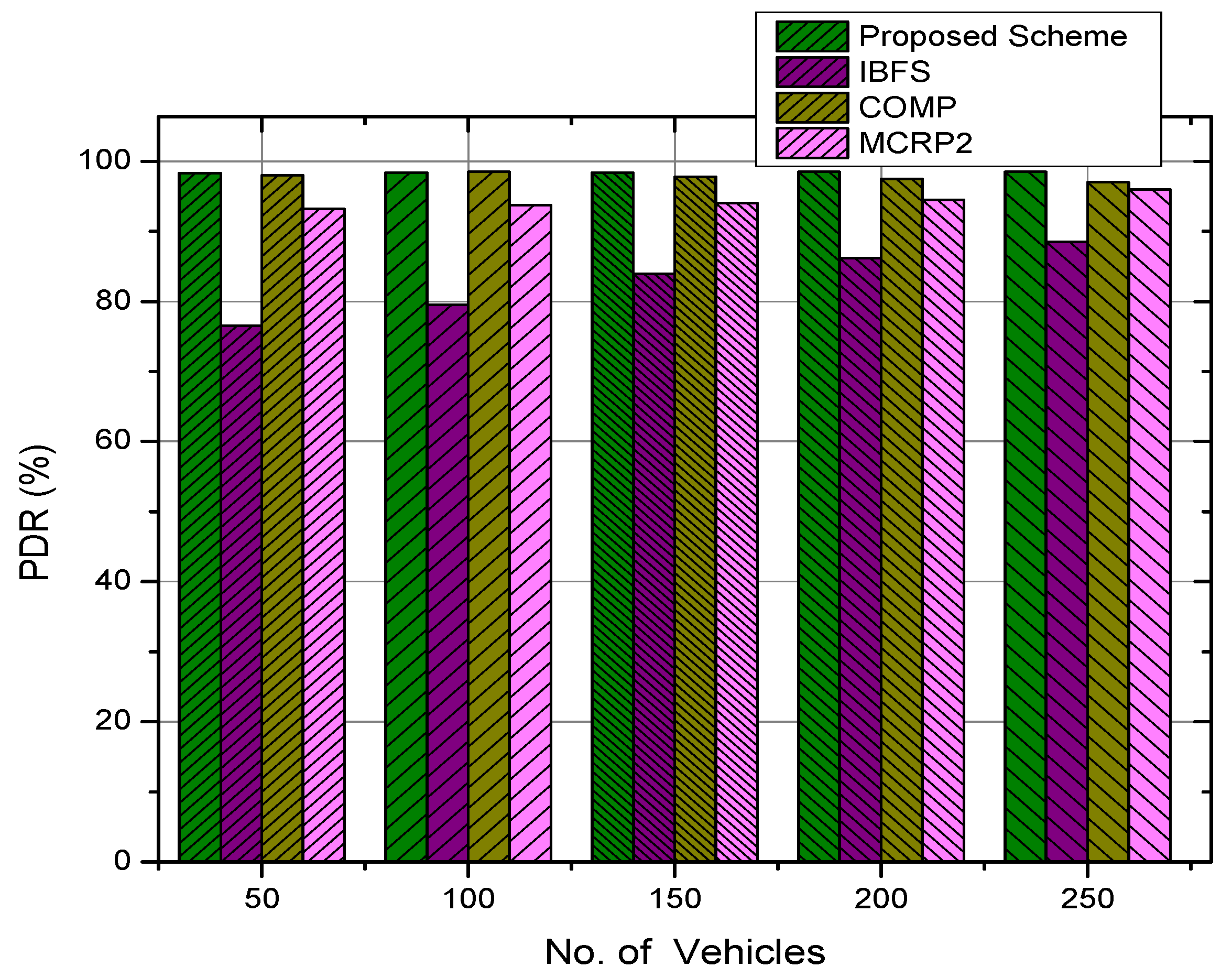
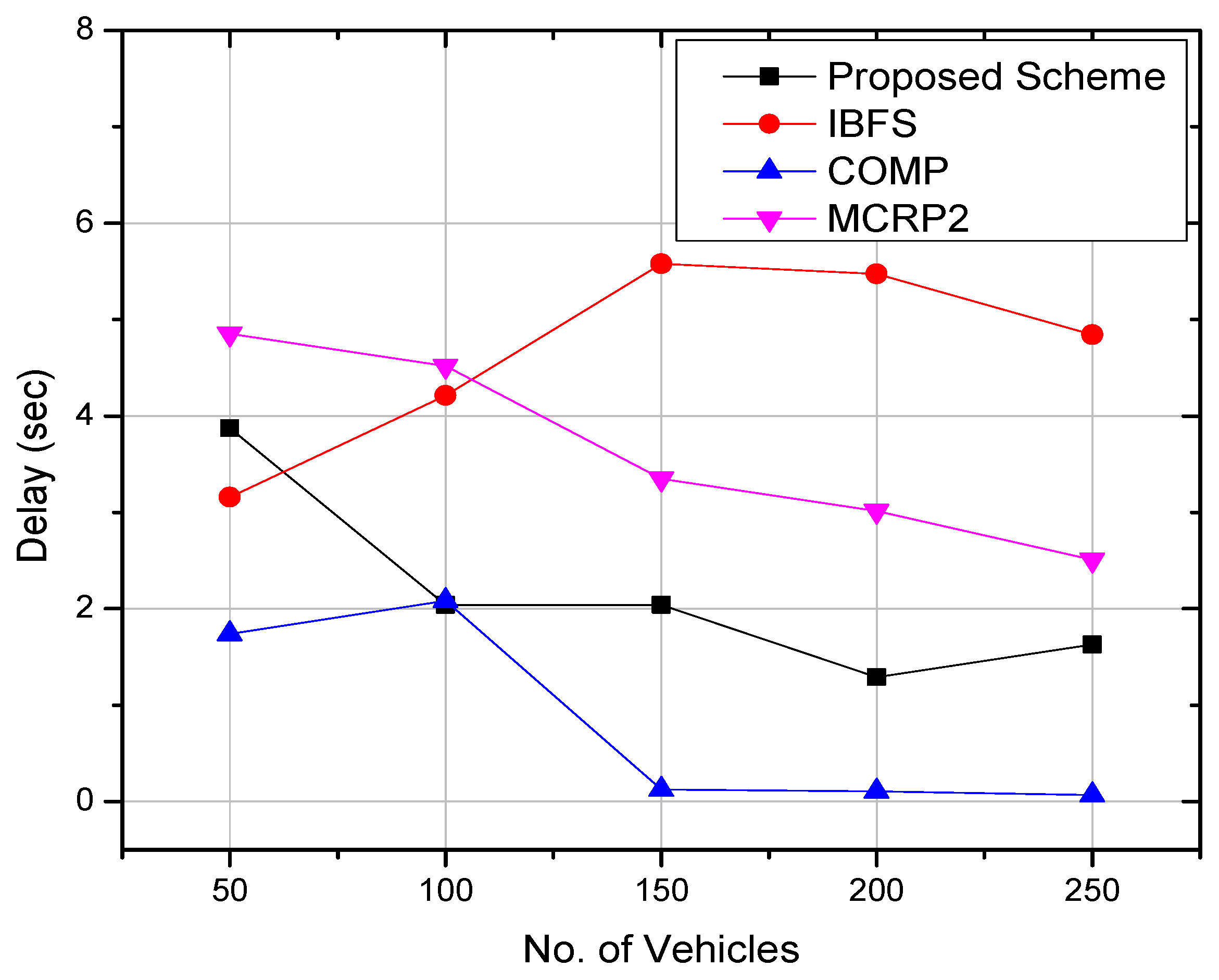
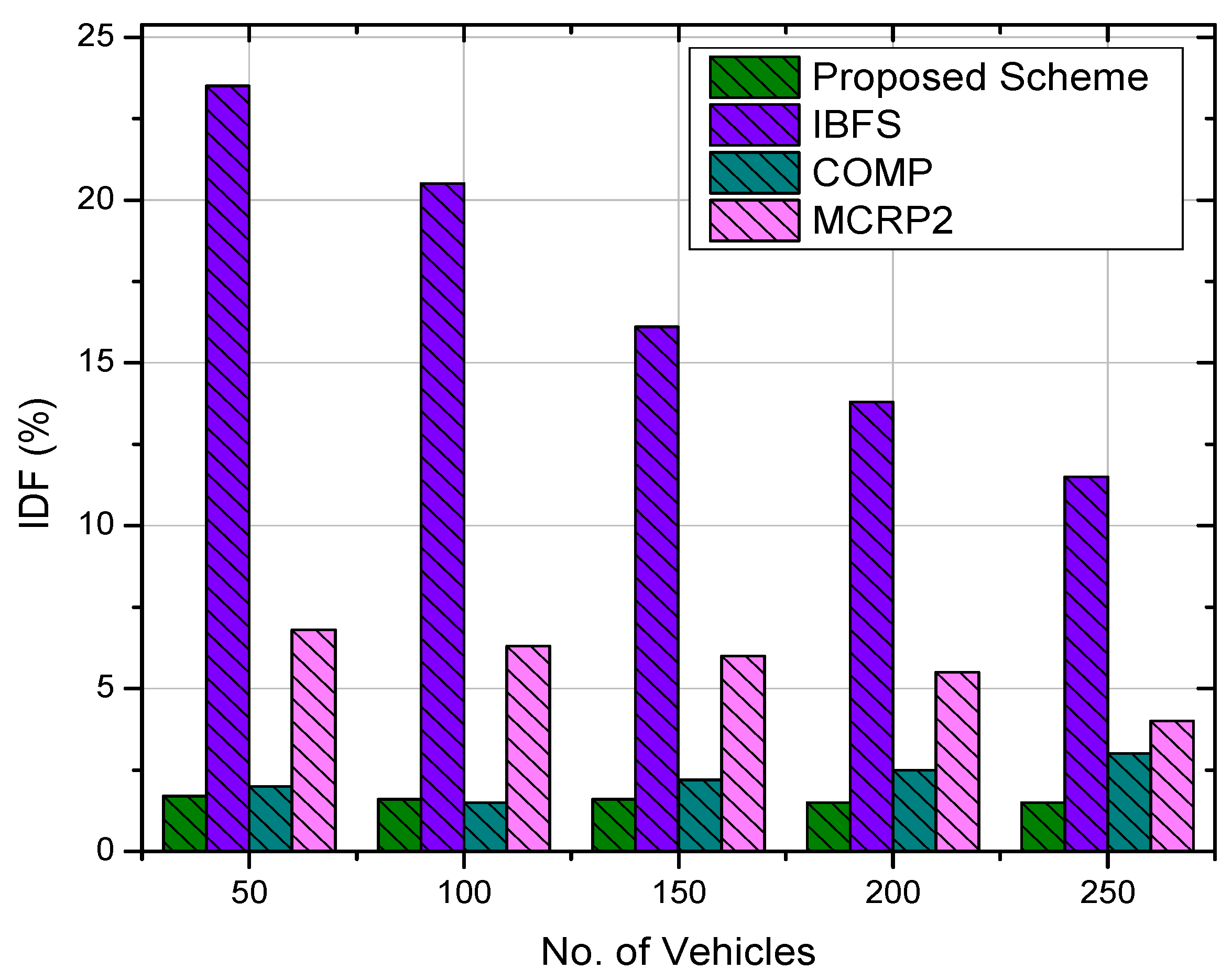
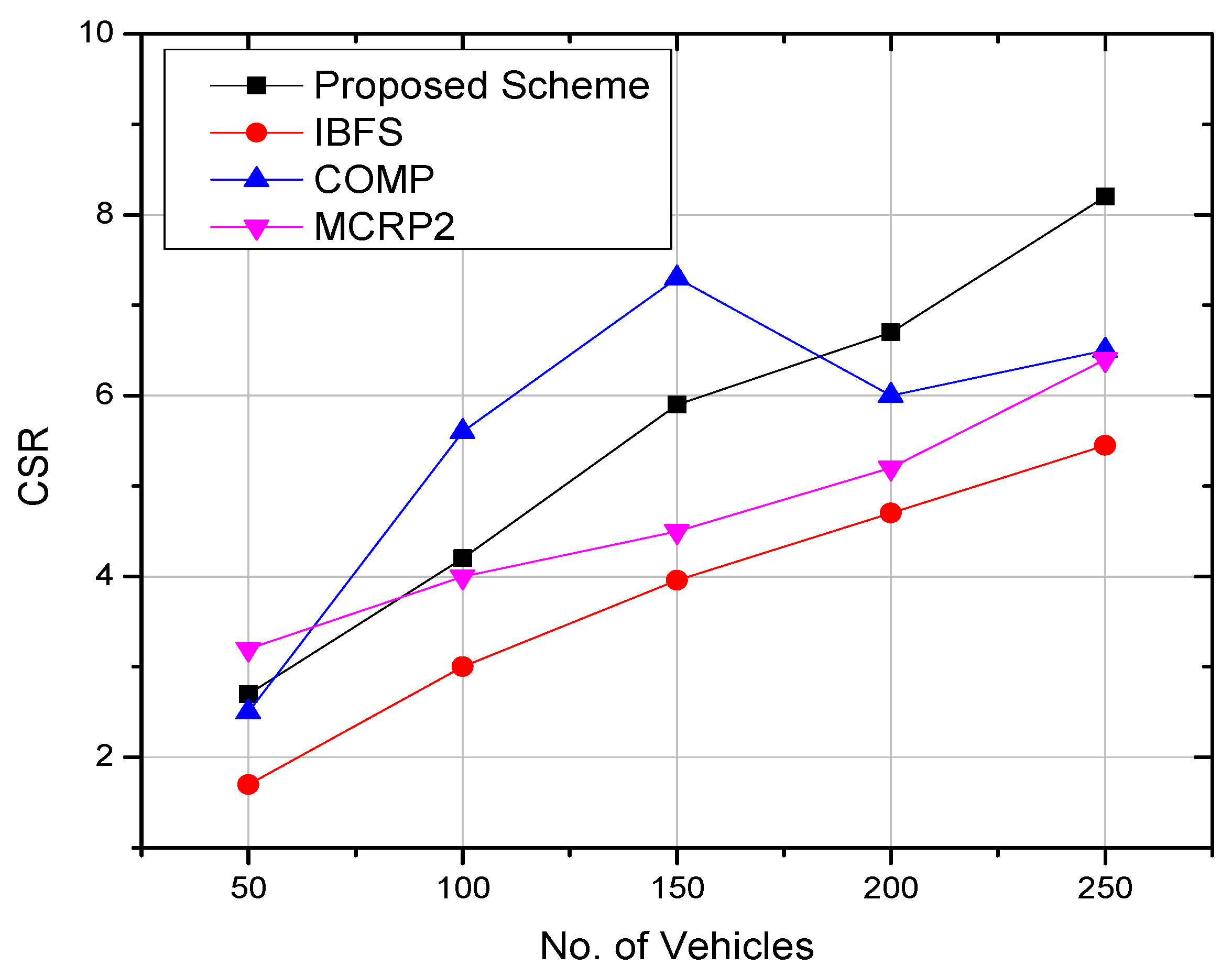
| Parameters | Specifications |
|---|---|
| Simulator | NS2 |
| Area Of Simulation | 10,000 m × 10,000 m |
| RSU Range | 500–1000 m |
| Vehicle Range | 300–600 m |
| No of Vehicles | 50, 100, 150, 200, 250 |
| No of RSUs | Varies |
| MAC Layer | 802.11 p |
| Packet Size | 1024 Bytes |
| Data Size | 1 KB |
| Query Size | 5 per s |
| Cache Update | 13 s |
Publisher’s Note: MDPI stays neutral with regard to jurisdictional claims in published maps and institutional affiliations. |
© 2021 by the authors. Licensee MDPI, Basel, Switzerland. This article is an open access article distributed under the terms and conditions of the Creative Commons Attribution (CC BY) license (https://creativecommons.org/licenses/by/4.0/).
Share and Cite
Siddiqa, A.; Diyan, M.; Khan, M.T.R.; Saad, M.M.; Kim, D. Mitigating Broadcasting Storm Using Multihead Nomination Clustering in Vehicular Content Centric Networks. Electronics 2021, 10, 2270. https://doi.org/10.3390/electronics10182270
Siddiqa A, Diyan M, Khan MTR, Saad MM, Kim D. Mitigating Broadcasting Storm Using Multihead Nomination Clustering in Vehicular Content Centric Networks. Electronics. 2021; 10(18):2270. https://doi.org/10.3390/electronics10182270
Chicago/Turabian StyleSiddiqa, Ayesha, Muhammad Diyan, Muhammad Toaha Raza Khan, Malik Muhammad Saad, and Dongkyun Kim. 2021. "Mitigating Broadcasting Storm Using Multihead Nomination Clustering in Vehicular Content Centric Networks" Electronics 10, no. 18: 2270. https://doi.org/10.3390/electronics10182270
APA StyleSiddiqa, A., Diyan, M., Khan, M. T. R., Saad, M. M., & Kim, D. (2021). Mitigating Broadcasting Storm Using Multihead Nomination Clustering in Vehicular Content Centric Networks. Electronics, 10(18), 2270. https://doi.org/10.3390/electronics10182270









